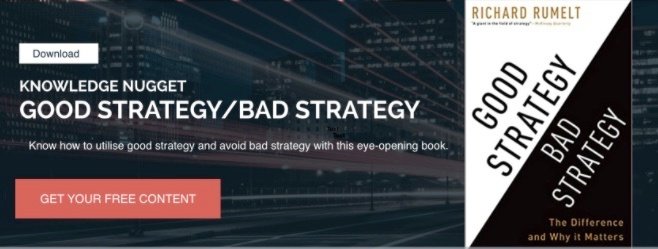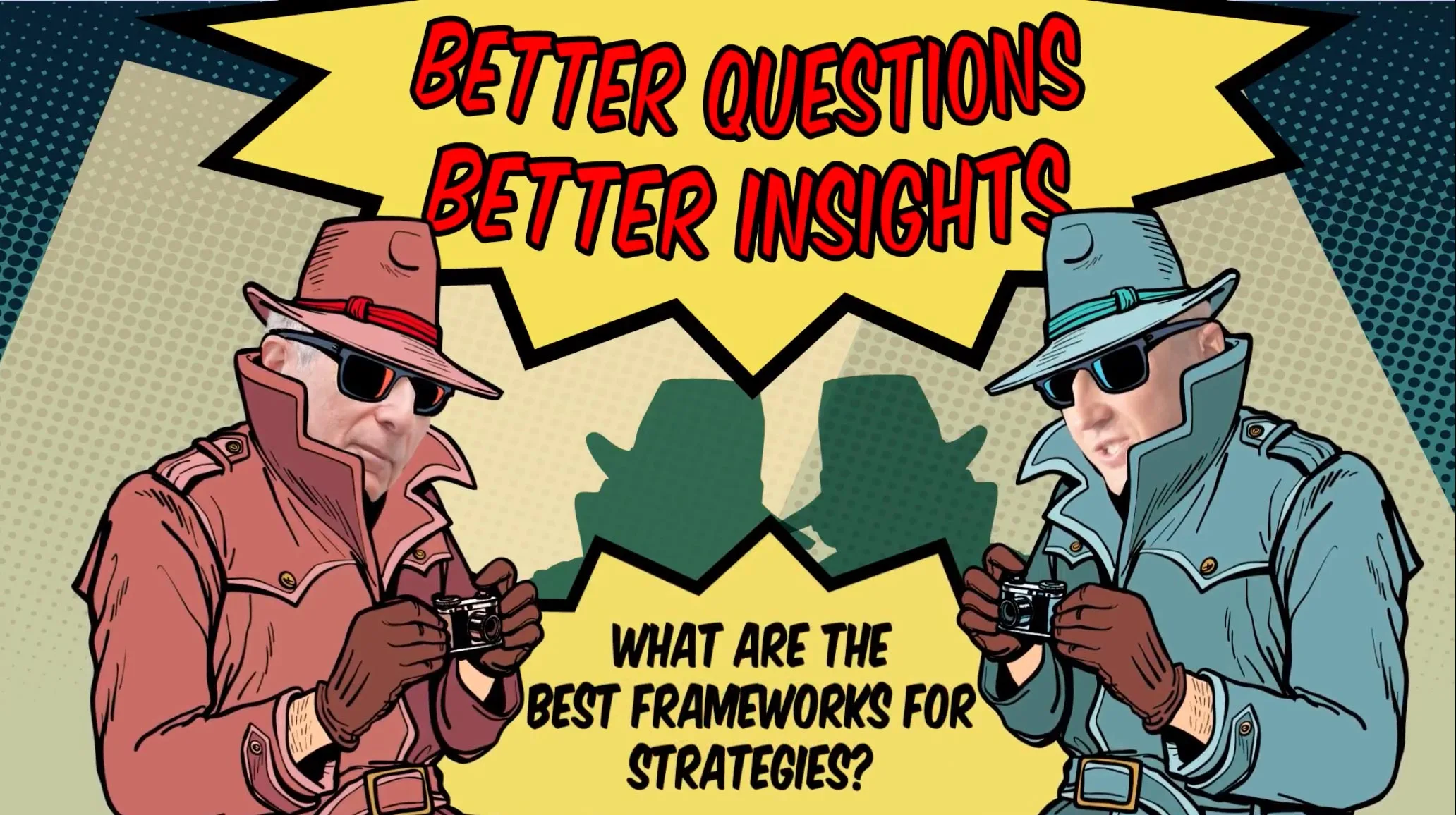3 Essentials of Strategy
Strategy is often hard to define, which makes it all the more difficult to distinguish what actually constitutes a good strategy.
Fortunately, Richard Rumelt’s classic book Good Strategy/Bad Strategy expertly articulates the building blocks of what constitutes a good strategy and a bad one.
Like most things, the fastest way to understand something is to go to the essence — what Rumelt calls the kernel of strategy.
Because understanding what lies at the heart of good strategy empowers you to create more of them.
The Kernels of Good Strategy
A sound strategy consists of three key interdependent (and equally important) aspects.
1. Diagnosis — A clear definition of the nature of the challenge. A diagnosis simplifies a complex situation and identifies certain aspects as critical.
2. Guiding Policy — An overall policy or approach for overcoming the obstacles identified in the diagnosis.
3. Set of Coherent Actions — The coordinated actions set out to accomplish the guiding policy.
If any of these elements are absent, it should raise warning signs about the validity and efficacy of the strategy.
Let’s take a deeper look at each of them.
1. Diagnosis
Strategy is about focus. It’s about leveraging limited resources to achieve maximum results. To do that, you must first understand the challenge you face — and that begins by discovering what’s important and what’s not.
Our Strategy Lead, Adeline Neoh, is prone to ask, “What’s at the heart of this?”
Or as Richard Rumelt’s colleague and ex-dean of UCLA John Mamer observed, the pertinent question is simply, “What’s going on here?”
A proper diagnosis comes from focusing attention on the points that matter and then defining the challenge with piercing clarity and insight. It is the clear and insightful answer to the question, “What’s going on here?”
So why does it matter? Because a diagnosis informs your response to the challenge.
A doctor treats a patient based on a diagnosis of their illness, and if that diagnosis is wrong, so too will the course of action be.
Such is the importance of getting the diagnosis right.
2. Guiding Policy
George Kennan, an influential US diplomat serving in the USSR in the fifties, diagnosed the challenge the USA faced with the Soviet Union — a long-term struggle without the possibility of a negotiated settlement.
This diagnosis evidently informed the guiding policy of the USA towards the USSR — containment — one that had enormous implications on world history.
The purpose of a guiding policy is to channel actions in a particular direction. It is the context and intent through which decisions are made and helps focus attention to head in a particular direction.
Rumelt refers to an example of a lady who runs a small grocery store. She is facing competitive challenges from a local big box grocery store that is open 24/7, and she can’t compete with it on price.
She has a range of options available: should she focus on fresh organic produce, or should she begin to stock specialty Asian food for the large number of Asian students who frequent her store?
Or perhaps she should remain open longer or try and compete on service.
She ended up deciding to focus on the busy professionals that visit her store. She would develop a competitive advantage by focusing on pleasing this customer group — this became her guiding policy.
By following this policy and developing her competitive advantage, she was able to develop a clear course of action to accomplish it.
3. A Set of Coherent Actions
Strategy without action is nothing but a document. But action without strategy is aimless. Just as a diagnosis informs the guiding policy, the guiding policy frames the coordinated steps to accomplish the goal.
The key point here is coordinated. Actions should support and build upon each other steadily marching toward the accomplishment of the strategic aims.
For example, a company with a guiding policy of delivering low-cost goods to their customers must have a series of interdependent actions designed to support that goal. From the supply chain to customer service, to staffing, a sustained and coordinated series of actions must be taken to support the guiding policy.
Sometimes, these actions are tough. But strategy is about making tough choices. Because by its very nature, a decision excludes other options. Having the discipline to focus, coordinate, and make decisions at the exclusion of other options is typically one of the biggest challenges businesses face when implementing their strategies.
Conclusion
Only with coherent and coordinated action can strategy go from ideas to reality. And when all three aspects of the kernels of good strategy are in place, you maximise your chances of delivering good strategy that delivers great results.
















